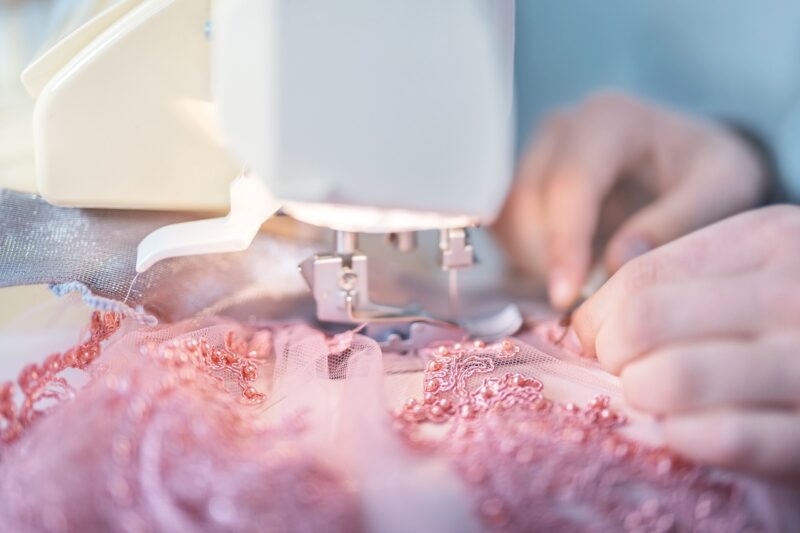How Sewing and Tailoring Your Clothes Can Be a Useful and Stylish Hobby
November 14, 2024

Sewing and tailoring are much more than just functional skills; they are creative pursuits that can lead to a wardrobe that reflects your personal style and preferences. In today’s fast-paced fashion industry, learning to sew offers a rewarding way to express your creativity while also saving money and contributing to sustainability. Whether you’re a complete novice or someone looking to refine your tailoring skills, there has never been a better time to dive into this fulfilling hobby.
1. The Benefits of Sewing and Tailoring
Engaging in sewing offers countless benefits, ranging from financial savings to emotional well-being. Let’s explore some of the most significant advantages you can gain by taking up sewing and tailoring:
- Cost-Effective Fashion: With the increasing prices of ready-to-wear clothing, making your clothes can lead to significant savings, especially if you opt for better quality materials. You can create stunning outfits tailored to your fit without spending a fortune.
- Customization: Have you ever found the perfect dress but wished it came in a different color or style? Sewing allows you to customize your garments to suit your taste. You can pick your fabric, pattern, and design, ensuring that the finished product is uniquely yours.
- Sustainability: In an era where fast fashion leads to waste, sewing encourages a more sustainable approach. By making your clothing, you can create lasting pieces that won’t go out of style, contributing to reducing environmental impact.
- Skill Development: Sewing is a skill that can be continuously improved upon. As you progress, you’ll find yourself mastering new techniques, which can inspire confidence and foster a sense of accomplishment.
- Therapeutic Effects: Many find that sewing is a therapeutic activity. The act of focusing on a tangible project can be incredibly calming and meditative, providing a break from the digital world around us.
The benefits of sewing extend beyond simply creating garments. It morphs into a holistic experience fostering creativity, sustainability, and personal growth.
2. Getting Started with Sewing
If you’re excited to start your sewing journey, here is a simple guide to getting started:
Gather Your Supplies
To begin, you’ll need some basic supplies:
- Sewing Machine: Choose a machine that balances feature sets with ease of use for beginners. The market offers a variety of options, so read reviews or test models to see what fits your needs best.
- Fabric: Start with cotton or another easy-to-sew fabric as you practice your skills. Eventually, you can branch into different textiles as your confidence grows.
- Thread, Needles & Pins: Invest in good-quality thread and the appropriate needles for your fabric type. Pins will help hold fabric pieces together when sewing, ensuring accuracy.
- Patterns: Beginner patterns are great for practice. Look for simple designs that accommodate your current skill level, often available at fabric stores or online.
Once you have these supplies, familiarize yourself with your sewing machine and practice basic stitches like straight stitch, zigzag, and more.
3. Learning Techniques
Sewing techniques range from basic to advanced and knowing these will enhance your skills as you progress:
- Basic Stitches: Start with the straight stitch and zigzag stitch, which are fundamental for most projects. Practicing these stitches on scrap fabric will boost your comfort level.
- Seam Finishing: Understanding how to finish seams correctly can help prevent fraying and give your garments a professional look. Techniques like French seams or serging will enhance durability.
- Fitting Techniques: As you take on more challenging projects, mastering fitting techniques is essential to achieving garments that look tailored. Learn about darts, tucks, and alterations to perfect the fit of any piece.
- Zippers and Buttonholes: Adding zippers or buttons to your garments takes practice, but once mastered, they can significantly elevate the look of your projects.
Keeping in mind that practice is key. Don’t shy away from challenges; rather embrace them as opportunities to grow.
4. Creating Your First Piece
Once you’re comfortable with the basics, it’s time to start your first project! Here are some beginner-friendly ideas:
- Pillowcases: An easy way to practice straight stitches and learn to handle fabric. You’ll quickly feel accomplished and have something decorative for your home.
- Tote Bags: Simple and functional, tote bags are a great beginner project that can be customized with various fabrics to showcase your style.
- Skirts or Simple Tops: After gaining confidence with small projects, consider making a simple skirt or top. Choose a pattern that allows you to experiment with darts and seams whilst keeping the complexity manageable.
Completing these projects will not only sharpen your skills but also inspire you to take on more complex sewing endeavors in the future.
5. Exploring Advanced Techniques
As you gain experience, there’s a myriad of advanced techniques to explore that can take your sewing to the next level:
- Tailoring & Fit Adjustments: Learn about proper fitting techniques that will allow you to create garments that are custom-fitted to you or others. Explore how to adjust patterns for different body types, and ventilation techniques for fitting support.
- Sewing with Knits and Stretch Fabrics: Knits can be challenging but are rewarding once mastered. Using the right stitching methods and techniques for seams can unlock an array of clothing options.
- Quilting and Embroidery: Expand your horizons by exploring quilting or incorporating embroidery into your projects. They can add intricate designs to your garments and allow for more creativity.
Exploring these techniques can open new doors for creativity and allow you to produce unique pieces that showcase your personal style.
6. Community and Resources
The sewing community is vibrant and full of resources for those looking to improve their skills. Here are a few ways to connect:
- Online Courses and Tutorials: Websites like YouTube, Skillshare, and Craftsy offer a range of tutorials for all skill levels. These can supplement your learning and provide visual demonstrations that help solidify concepts.
- Sewing Groups and Clubs: Look for local sewing clubs, where you can meet fellow sewing enthusiasts to share experiences, tips, and motivation. Connecting with others can reignite your passion and spark creativity.
- Sewing Blogs and Influencers: Many bloggers share projects, tips, and patterns that can help you scout inspiration. Consider following creatives in the sewing space for fresh ideas and community support.
“Finding community helps enrich your sewing experience, facilitates learning through shared knowledge, and inspires new ideas.”
Conclusion
In conclusion, sewing and tailoring your clothes is an invaluable skill that not only allows you to express your individuality but also serves practical purposes. From saving money to creating sustainable fashion, there are countless reasons to embrace this art form.
So gather your materials, pick your first project, and embark on this enriching journey where creativity knows no bounds. With each stitch, you will weave not just fabric, but also your personal style and identity into every creation you make.





